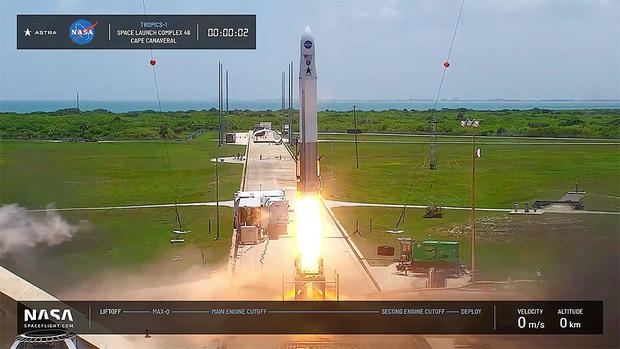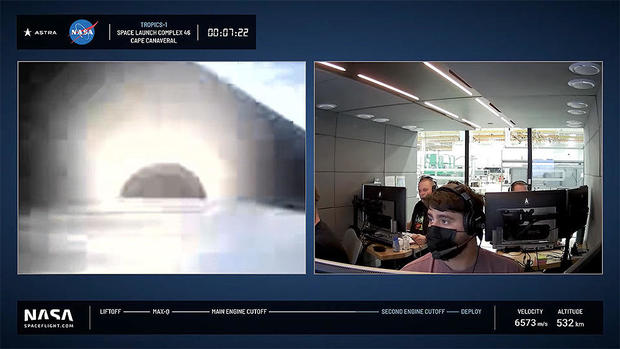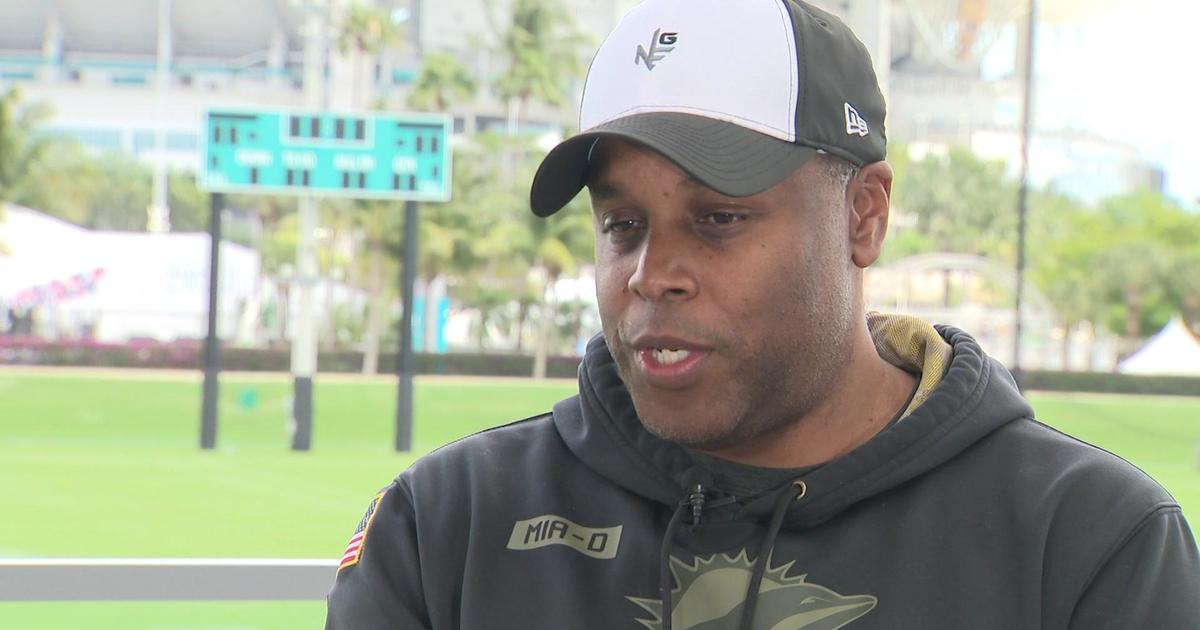Low-cost Astra rocket suffers upper stage failure, two NASA satellites lost
California-based Astra on Sunday launched two shoebox-size NASA satellites from Cape Canaveral in a modest mission to improve hurricane forecasts, but the second stage of the company's low-cost booster malfunctioned before reaching orbit and the payloads were lost.
"The upper stage shut down early and we did not deliver the payloads to orbit," Astra tweeted. "We have shared our regrets with @NASA and the payload team. More information will be provided after we complete a full data analysis."
It was the seventh launch of Astra's small "Venture-class" rocket and the company's fifth failure. Sunday's launch was the first of three planned for NASA to launch six small CubeSats, two at a time, into three orbital planes.
Given the somewhat risky nature of relying on tiny shoebox-size CubeAats and a rocket with a very short track record, the $40 million project requires just four satellites and two successful launches to meet mission objectives.
The NASA contract calls for the final two flights by the end of July. Whether Astra can meet that schedule given Sunday's failure is not yet known.
"Although today's launch with @Astra did not go as planned, the mission offered a great opportunity for new science and launch capabilities," tweeted NASA science chief Thomas Zurbuchen.
Sunday's launching came and hour and 43 minutes late, primarily to ensure the booster's load of liquid oxygen propellant was at the proper temperature. Finally, hoping to chalk up the company's third successful flight to orbit, Astra engineers counted down down to liftoff at 1:43 p.m. ET.
With its five first-stage engines generating 32,500 pounds of thrust, the 43-foot-tall Rocket 3.3 roared away from pad 46 at the Cape Canaveral Space Force Station, putting on a dramatic show for area residents and tourists enjoying a sunny day on nearby beaches.
The first stage boosted the payload out of the lower atmosphere, handing off to the single engine powering the rocket's upper stage.
All appeared to be going smoothly when, about a minute before the second stage engine was expected to shut down, an onboard "rocketcam" showed a flash in the engine's exhaust plume. The camera view them showed what appeared to be a tumble before video from the rocket cut off.
The goal of NASA's TROPICS mission is to monitor tropical storm development in near real-time by flying over hurricanes and other major systems every 45 to 50 minutes and beaming back temperature profiles, precipitation, water vapor and cloud ice data.
That rapid revisit capability, that is, the time between satellite passes over a given storm system, is intended to help scientists better understand how major storms develop and help forecasters better predict a storm's track and intensity.
"Measuring hurricanes from space is really hard to do, because they're very dynamic, they're changing on the timescales of minutes, you need to spatially resolve all the features of the storm, the eyes, the rain bands," said William Blackwell, principal investigator of the TROPICS mission at MIT.
"Today, we get maybe four or six hours before the next satellite flies over. With this Cubesat constellation of six satellites ... we can fly over about every hour. We'll see how the storm is changing, be able to better predict how it might intensify. What we're trying to do is improve our forecast ability."
NASA is paying $8 million for three Astra launches and about $32 million for development and testing of the cubesats and one year of data analysis.
The TROPICS mission represents more technical risk than NASA usually accepts -- cubesats, while relatively inexpensive, have little redundancy and Astra's Rocket 3.3 has not yet demonstrated reliable performance -- but officials say the potential scientific payoff justifies a "high-risk high-impact" project.
"I love TROPICS, just because it's kind of a crazy mission," Zurbuchen said last week. "Think of six cubesats ... looking at tropical storms with a repeat time of 50 minutes instead of 12 hours."
After Sunday's failure, he tweeted: "Even though we are disappointed right now, we know: There is value in taking risks in our overall NASA Science portfolio because innovation is required for us to lead."
While the NASA contract covers six cubesats and their launchers, only four need to work to meet the contract requirements. In that case, Blackwell said, revisit times would be on the order of one hour. With all six in operation, the gap between observations would be 45 to 50 minutes.
Putting TROPICS on what NASA's calls a Venture-class rocket with a short track record made sense from NASA's perspective.
"You're always nervous with any launch, irrespective of what the vehicle is," Blackwell said. But in this case, "we have resilience built (in) to tolerate these kinds of new capabilities. So it's a good match between our robust mission with six satellites, and only needing four, and this new capability of lower costs, rapid-cadence launching."






